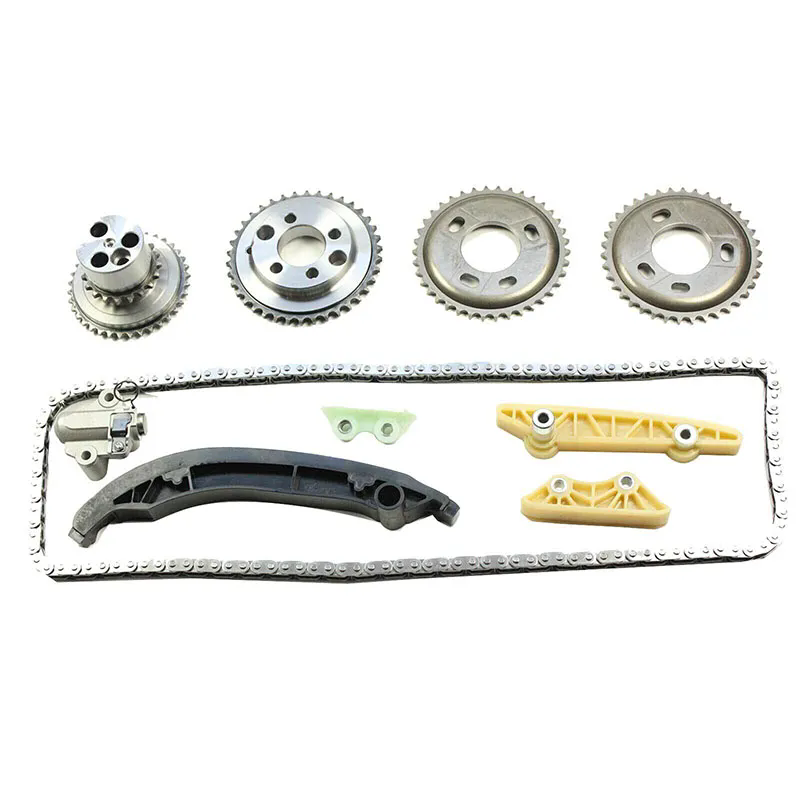Everything You Need to Know About Timing Chain Kits
2024-10-16
When it comes to engine performance and durability, few components are as critical as the timing chain. Found in many modern internal combustion engines, the timing chain ensures that the crankshaft and camshaft are synchronized, allowing the engine's valves to open and close at the correct intervals. Over time, the components involved in this process can wear down, making a timing chain kit essential for maintaining optimal engine function.
In this post, we’ll explore what a timing chain kit includes, its benefits, signs of wear, and why replacing your timing chain on time is crucial for your vehicle’s health.
What Is a Timing Chain Kit?
A timing chain kit is a comprehensive set of parts needed to replace the timing chain system in your vehicle. While timing belts were once more common, many car manufacturers have switched to timing chains because of their durability and longer lifespan. However, even a timing chain requires maintenance and replacement over time.
Components Included in a Timing Chain Kit:
- Timing Chain: Connects the crankshaft to the camshaft and controls valve timing.
- Tensioner: Keeps the chain tight to prevent slack and maintain proper operation.
- Chain Guides: Direct and support the chain to prevent it from slipping or vibrating.
- Sprockets/Gears: Attach to the crankshaft and camshaft to transfer rotational force.
- Seals and Gaskets: Ensure a tight seal to prevent oil leaks during reassembly.
How Does a Timing Chain Work?
The timing chain plays a crucial role in the engine's four-stroke cycle (intake, compression, power, exhaust). By synchronizing the crankshaft and camshaft movements, the chain ensures that the valves open and close at the correct time in relation to the piston movements, allowing for efficient combustion.
If the chain stretches or slips out of alignment, the engine's valves could open or close at the wrong time, resulting in misfires, reduced performance, or engine damage.
Benefits of a Timing Chain Kit
1. Comprehensive Replacement:
A kit includes all necessary parts, reducing the risk of missing components or improper reinstallation.
2. Longer Engine Life:
Replacing worn parts helps maintain smooth engine operation and prevents major engine failures.
3. Cost-Effective:
Although buying individual parts might seem cheaper, a complete kit ensures compatibility and reduces labor costs over time.
4. Durability:
Timing chains last longer than belts, and regular replacement of guides and tensioners with a kit keeps them in top condition.
Signs That Your Timing Chain Kit Needs Replacement
While timing chains are designed to last longer than belts, they aren’t immune to wear. Here are some signs that your timing chain or related components need replacement:
1. Rattling Noise from the Engine:
A loose or stretched chain can cause rattling sounds, especially at startup.
2. Engine Misfires or Poor Performance:
If the timing chain slips, the engine timing will be off, leading to misfires or sluggish acceleration.
3. Check Engine Light:
A faulty timing chain can trigger error codes related to valve timing.
4. Oil Leaks:
Worn-out gaskets or seals associated with the chain cover can lead to oil leakage.
5. Engine Won’t Start:
If the chain breaks, the engine will not be able to turn over.
Why Replacing a Timing Chain on Time Is Critical
Ignoring a worn timing chain can lead to catastrophic engine failure, especially if it breaks while the engine is running. In interference engines, where valves and pistons share the same space, a broken chain can cause valves to collide with pistons, leading to severe engine damage and costly repairs.
By replacing the chain and related components before they fail, you avoid expensive engine repairs and ensure your vehicle runs smoothly for years to come.
How to Install a Timing Chain Kit
Replacing a timing chain kit can be a complex task that requires advanced mechanical skills. If you plan to install the kit yourself, follow these general steps:
1. Disconnect the Battery to ensure safety.
2. Remove Engine Covers and components obstructing access to the chain.
3. Drain the Oil to prevent spills during the process.
4. Align Timing Marks on the crankshaft and camshaft to ensure correct reassembly.
5. Remove the Old Chain and Tensioners carefully.
6. Install the New Chain, Guides, and Tensioner following the kit instructions.
7. Reassemble the Engine Components and refill the engine oil.
8. Test Run the Engine to ensure everything is functioning correctly.
Pro Tip: Always refer to the vehicle’s service manual for model-specific instructions and torque specifications. If you're not confident in your skills, it’s best to leave the installation to a professional mechanic.
Conclusion
A timing chain kit is essential for maintaining your engine’s performance and reliability. Whether you’re addressing signs of wear or conducting preventive maintenance, investing in a complete kit ensures that all components are correctly replaced and synchronized.
While timing chains offer a longer lifespan compared to belts, it’s crucial to recognize the early signs of wear and address them before they lead to more significant problems. If you’re looking to keep your vehicle running smoothly for years to come, don’t delay replacing your timing chain—it’s an investment in the longevity of your engine.



